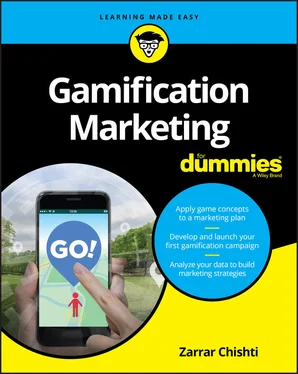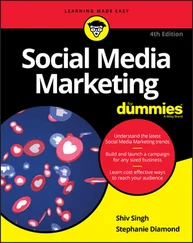The key to defining your target audience is to be as specific and as visual as possible so that your marketing message feels very personal to them, almost as if you had written to them personally.
Start by defining one specific group of people you want to reach with your marketing message. This group should be interested in your solutions and very likely willing to purchase your products or services. The more specific you can be, the better.
By defining your audience, you’ll have a group of people who are most likely to lead to conversions after encountering your campaign. Keep narrowing down this audience in as much detail as possible.
In the following sections, I walk you through how to define your audience.
Throwing out everything you think you know about your audience
Companies often are blind when trying to create target audiences. They feel like they already know who their target audience is, instead of conducting independent audience research.
 Assuming who your audience is and what they like can cause your gamification marketing campaign’s content and strategy to seriously miss the mark. You could experience the following:
Assuming who your audience is and what they like can cause your gamification marketing campaign’s content and strategy to seriously miss the mark. You could experience the following:
Poorly judged creative decisions
An unengaging campaign style and personality
Misjudged promotional strategies
A campaign that doesn’t resonate with your audience
 Although you may already have a detailed image of your target audience in mind, actively challenge your thought processes. This means gathering hard evidence to substantiate your thoughts. When you do this, you’re in the best possible position to offer value to your audience.
Although you may already have a detailed image of your target audience in mind, actively challenge your thought processes. This means gathering hard evidence to substantiate your thoughts. When you do this, you’re in the best possible position to offer value to your audience.
Conducting research to find your audience
In a perfect world, every single person on the planet would love your gamification marketing campaign. But this isn’t possible because your campaign needs to deliver a personalized experience, and not every consumer is the same.
 There are a few methods you can use to better identify and analyze your target market:
There are a few methods you can use to better identify and analyze your target market:
Conduct your own primary research. You can do this by conducting surveys and assembling focus groups to analyze your campaign’s objectives. Surveys are efficient because you can receive a large volume of customer feedback without investing a lot of money. Although focus groups are expensive, time consuming, and resource dependent, they encourage productive, interpersonal discussion, which leads to far more productive feedback. I look into this form of research in more detail in Chapter 10.
Look into your competitors. What are their customers saying about their campaigns on social media? You can identify a whole host of things not to do by looking at what has annoyed and put their audience off.
Exhaust your existing resources. Do you have mini client databases in other departments of your company? Collect them all and analyze them for key data points.
Conduct A/B testing. Create two versions of your core message and measure the difference in performance. After you’ve created your two versions, give one version to one group and the other version to another group. You can then monitor and review the responses and level of engagement each version received.
Be as specific as possible. Drill down on who your audience truly is, and study their online attitudes and pain points. By identifying a specific target audience, you can make decisions that are dictated by your customers, which sets your campaign up for long-term success.
Segment your audience (see Chapter 9 ). Locate all the data you can about how the target customer behaves and any basic information about them. This will help you identify your audience. This data can include the following:AgeLocationGenderIncome levelEducation levelMarital or family statusOccupationEthnic backgroundInterestsHobbiesValuesAttitudesBehaviorsLifestyle preferences
Taking a Closer Look at Your Current Customer Base
By knowing your target audience, you can maximize the results of every campaign launch. This means that as you launch more gamification marketing campaigns, you’ll find that it’ll take less effort, giving you the opportunity to grow and evolve your audience comfortably.
How do you even know what your target audience might look like? Instead of going through experimentation and trial and error, you should look to your existing, loyal customer base. Also, a large portion of the audience who will visit your campaign will be people like your existing customers. Defining these customers can help you refine your campaign’s messages to deliver a more personal experience.
You’ll gain the following benefits by successfully targeting your gamification marketing campaign to existing customers:
You can tailor your campaign’s content to ensure that it will appeal to the right people.
You can gain a better understanding of the needs of your audience.
Your campaign will provide a more beneficial and engaging experience.
There will be a higher rate of conversions and call-to-action (CTA) engagements within your campaign.
Establishing existing data points
Initially you need to look at your existing database, whether that’s in the form of your company’s customer relationship management (CRM) system, SQL/MySQL database, or even Microsoft Excel spreadsheets. Make sure you have each customer’s contact information, as well as their purchase and engagement history with your company. Using this information, you need to identify customers by:
Purchase history: How much they’ve spent over their lifetime and the most they’ve spent on one order
Referrals: The customers who provide the most identifiable referrals
Feedback: The customers who have provided feedback or reviews regarding your company, products, or services
After you’ve identified this information, you can perform an analysis to discover and understand your customers’ defining characteristics. From there, you can create your audience profiles and then target people who fit the same mold.
 Starting to work through the vast amounts of profiles can be overwhelming. Depending on how your customers have connected with your business, you may not have a lot of information about them. Don’t worry about what you don’t have — just gather all the information you do have about your existing customers into a small database or spreadsheet so that you can start tracking trends.
Starting to work through the vast amounts of profiles can be overwhelming. Depending on how your customers have connected with your business, you may not have a lot of information about them. Don’t worry about what you don’t have — just gather all the information you do have about your existing customers into a small database or spreadsheet so that you can start tracking trends.
Here are some of the data points you’ll want to include in your analysis:
Personal information: This kind of information includes your audience’s age (a rough age bracket), gender, income, and occupation.
Geographic information: This is where your existing customers live, as well as their time zone.
Language: Don’t assume your customers speak the same language as the one that’s dominant in the place they live. Identify their native language.
Interests: Interests are a hugely varied piece of the target audience. What do your customers like to do, besides using your products or services?
Читать дальше

 Assuming who your audience is and what they like can cause your gamification marketing campaign’s content and strategy to seriously miss the mark. You could experience the following:
Assuming who your audience is and what they like can cause your gamification marketing campaign’s content and strategy to seriously miss the mark. You could experience the following: Although you may already have a detailed image of your target audience in mind, actively challenge your thought processes. This means gathering hard evidence to substantiate your thoughts. When you do this, you’re in the best possible position to offer value to your audience.
Although you may already have a detailed image of your target audience in mind, actively challenge your thought processes. This means gathering hard evidence to substantiate your thoughts. When you do this, you’re in the best possible position to offer value to your audience. There are a few methods you can use to better identify and analyze your target market:
There are a few methods you can use to better identify and analyze your target market:










